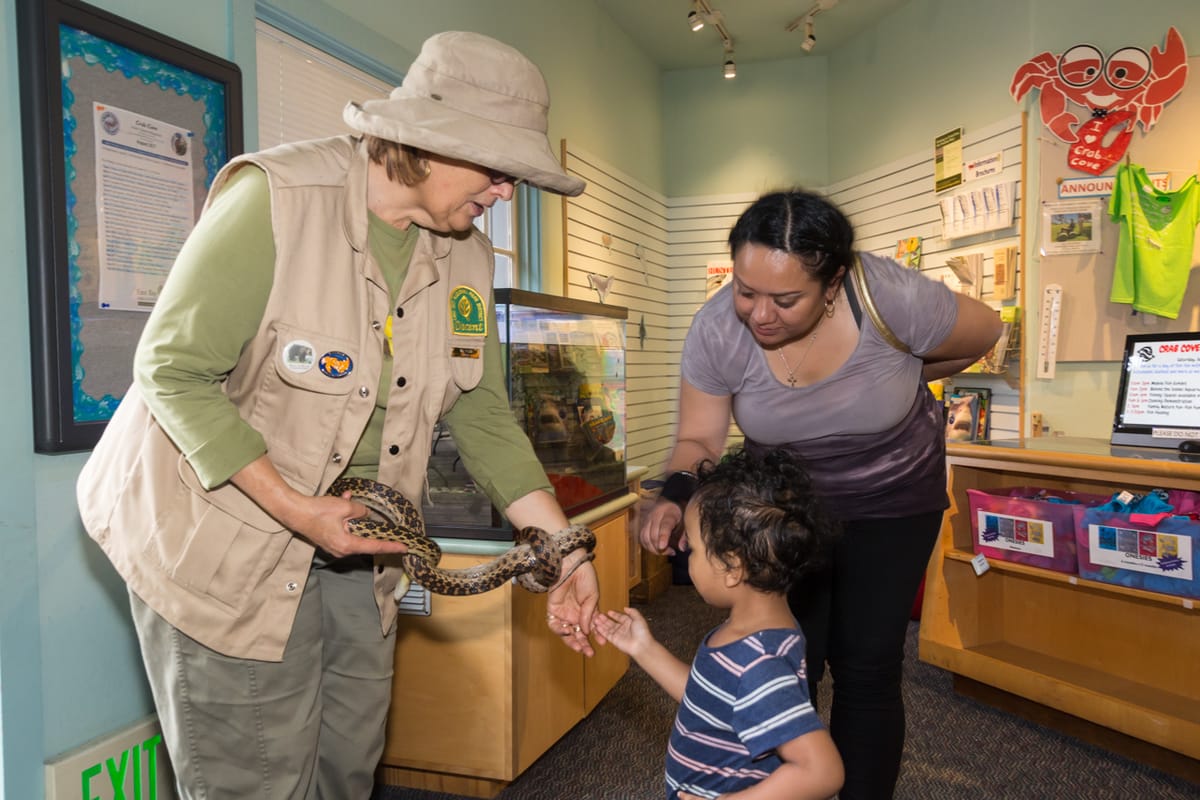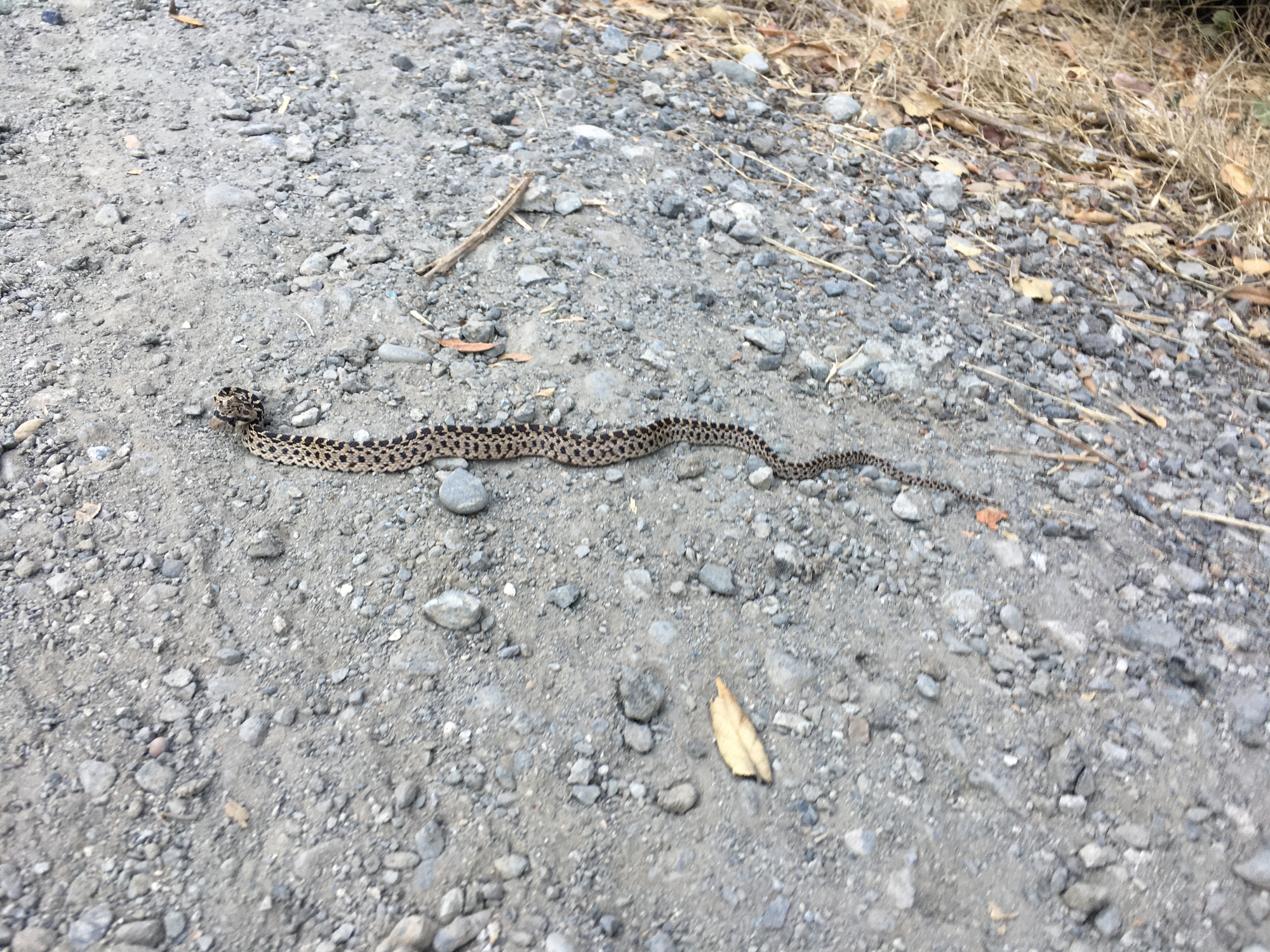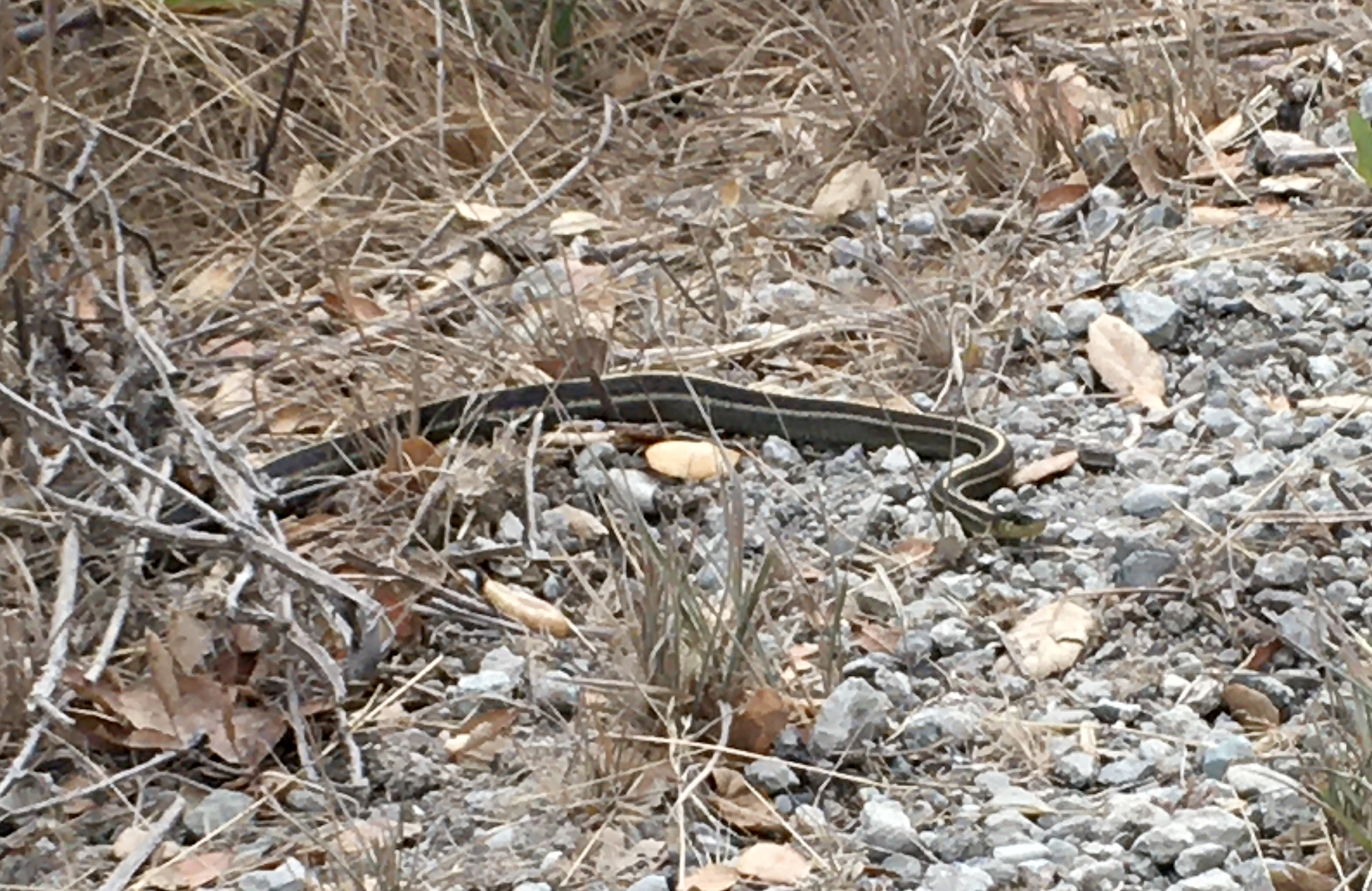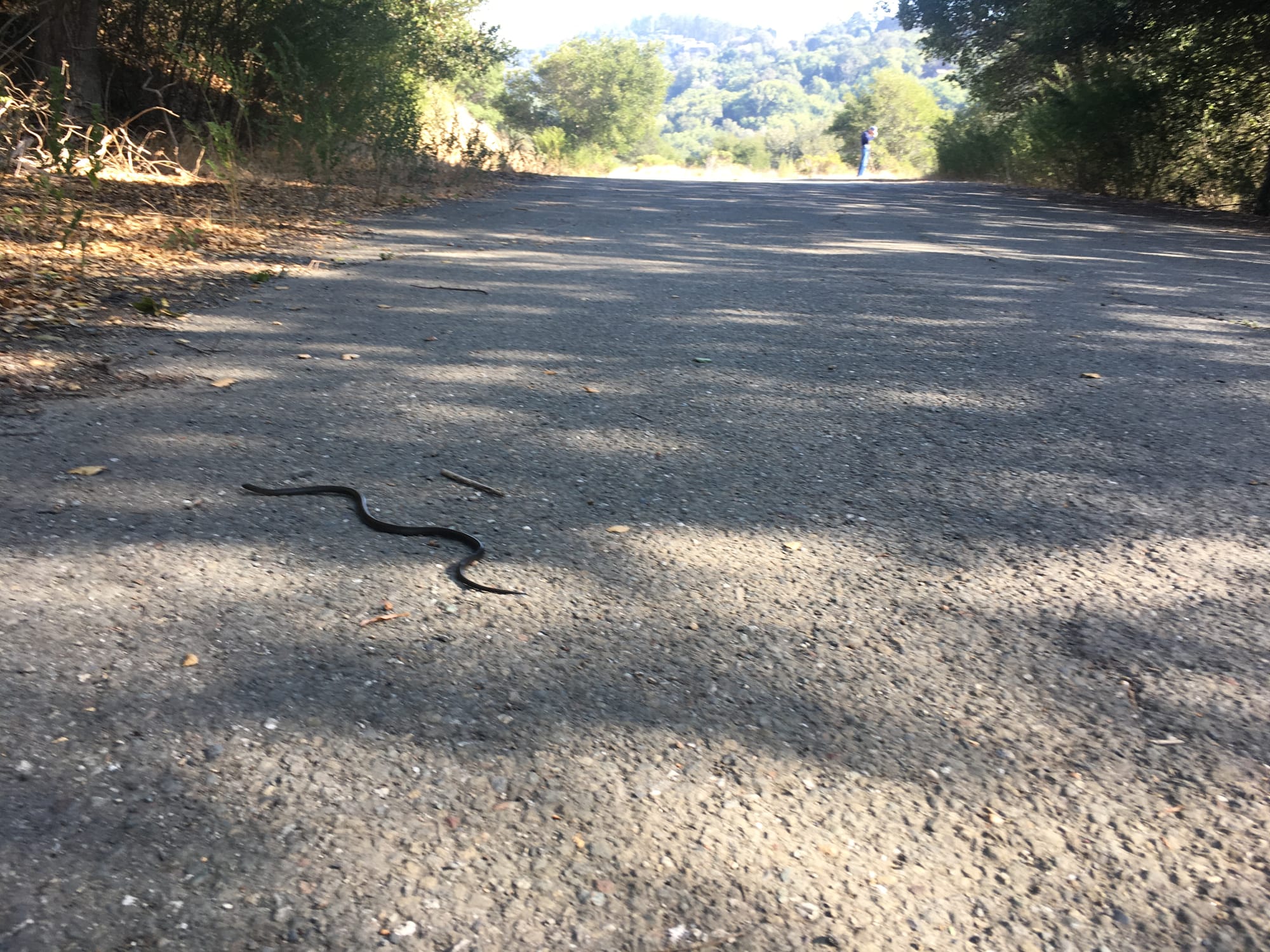

Last month, the East Bay Regional Park District released a rattlesnake advisory warning the only venomous snake in northern California was out and about looking for food and mates.
The northern Pacific rattlesnake is not the only snake you might encounter in local parks.
Flora Csontos, Acting Public Information Specialist for the park district, says there are about 17 species of snakes that call Alameda and Contra Costa Counties home.
“All other snakes are harmless, though gopher snakes make their best effort to look like rattlesnakes, and all snakes can bite,” Csontos said. “If you encounter any snake, it is best to simply leave it alone and give it plenty of space.”
The most commonly encountered snake is the Pacific gopher snake, a brown snake with darker brown, saddle-shaped markings that can be found anywhere from the shoreline to Mount Diablo, Csontos said.



The snakes of Wildcat Canyon Regional Park. Photos/Soren Hemmila
“The gopher snake grows to 4 or 5 feet long and is one of the larger snakes native to the area, but we have snakes of all sizes, down to the common sharp-tailed snake that is often mistaken for an earthworm,” Csontos said
Our snake neighbors fill many ecological niches, Csontos said. The northern Pacific rattlesnake almost exclusively eats small mammals, like gophers and ground squirrels. The Diablo Range garter snake is more aquatic and prefers to eat frogs, fish, and salamanders.
Alameda whipsnakes are a federally threatened subspecies found only in the East Bay that are lightning fast, an adaptation to feeding on lizards. The Alameda whipsnake has specific habitat requirements and prefers sunny, chaparral slopes.
Smaller snakes, like the ring-necked snake, eat smaller amphibians and invertebrates, like worms and slugs.
“Snakes are all around us, though are often not easily detected. They prefer to be left alone and do not want to interact with people,” Csontos said.
Snakes are threatened by humans through habitat loss and vehicle strikes. When those areas are altered or developed, the snakes can have fewer places to call home.
“All snakes are ectothermic, meaning they cannot generate their own body heat, and will take advantage of warm rocks or surfaces like roads to warm themselves. Slow down and watch for snakes,” Csontos said.
Recently, Heather Taylor, the founder and teacher of Outside School, an outdoor education program located in Wildcat Canyon Regional Park, led her students to search for reptiles and amphibians in their natural habitat.
“We recently went specifically out herping, with me donning my new (ridiculous/for show) snake gaiters and us both trying out my new snake hook/pinner combo," Taylor said. "We practiced with it on sticks since we came across our most usual number of snakes to find in a day: zero."
Throughout Taylor’s teaching career, she’s promoted the underdogs, including misunderstood flora and fauna. Taylor had snakes and rats in her earliest classrooms, and now her students find them out in the wild, since the world is Outside School’s classroom.
Taylor’s students treat every experience as a learning opportunity, checking out a huge tree they witnessed fall down, a coyote coming to nap nearby, chatting with neighbors, finding dead animals, or the occasional snake.
“The snakes we find are rare, and really, really cool,” Taylor said. “We most often find gopher snakes. Some other kids once found one in the lawn, having come up out of a gopher hole. Garter snakes are another common one. We found a ringneck snake once, and I think a rubber boa a few weeks ago, but it was gliding away from us in the grass, and we just saw a couple inches of scales.”
Taylor said the Outside School has not seen a rattlesnake, but she mentions them and other potentially hazardous fauna and flora in her handbook.
“I love natural history. Handling snakes leads to both a reduction in fear and an immediately palpable sense of awe and increased wonder when facilitated by an experienced person. A child’s positive experience with a snake can change an entire family’s outlook on them,” Taylor said.
Csontos said that while rattlesnakes can be found throughout East Bay, they are rare in urban areas or along shorelines.
“If you encounter a rattlesnake, it will usually buzz the rattle on its tail to warn you it is there before biting,” Csontos said.
If a rattlesnake bites you, keep calm and call 911. The park district says it is better to call 911 than drive to a hospital because 911 can direct the patient to the hospital best equipped to treat the bite. Do not apply a tourniquet, try to suck out the poison, or use a snake bite kit.
Click to become a Grandview Supporter here. Grandview is an independent, journalist-run publication exclusively covering Richmond, CA. Every cent we make funds reporting from Richmond's neighborhoods. Copyright © 2024 Grandview Independent, all rights reserved.
